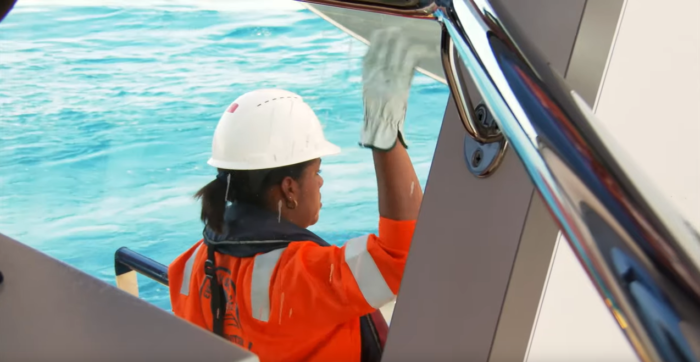The issue of gender balance in shipping makes headlines in 2019, with IMO devoting the Day of the Seafarer, as well as the World Maritime Day, to the encouragement of more women in the maritime. A persistence in tradition still seems to be holding the shipping industry away from being more inclusive and diversified and brings women of the 21st century still confronted with superstitions and misconceptions around their potential work at sea.
Let’s see what the common misconceptions are for a woman seafarer of today!
Myth #1: Women are bad luck at sea
With the scientific and technologic development of today, the above perception can be considered at least a superstition, equivalent to “Like a woman, a ship is unpredictable”, and many other tradition-rooted conceptions. Bad luck for a ship can be inclement weather or a technical dysfunction, but none of these can be scientifically attributed to the presence of somebody onboard.
Myth #2: Female crew members can distract males
If we suggest that life onboard is just a simulation of life in everyday societies, it comes for granted that men and women work successfully together in different professions all over the world, as companies, stores, services and many others, and every work position requires caution and responsibility. So, why would it be any different onboard a ship?
Myth #3: Female employees will just leave to have a baby
Some companies may be reluctant to employ women as seafarers, ISWAN says, if they believe that they will lose out when female employees leave to start a family. But families include both men and women. If we take for granted that maternity leave is inevitable at some point for a high percentage of women, and that, in parallel, so many men at sea are missing the birth of their children, it can be assumed that the option of paternity leave would create happier crews and would minimize sex discrimination from this point of view. Being a parent is normal and must be able to align with a professional life for both sexes.
Myth #4: The ship environment is too tough for a woman
The fear of isolation or harassment is one of the major factors making women reluctant to pursue seafaring careers, while onboard tasks may require men’s strength from a physical point of view. However, ILO studies have indicated that having women onboard creates a more normal social environment and can reduce the sense of isolation felt by many seafarers.
Myth #5: Women are insufficient leaders
No argument is stronger than facts themselves. Only the year 2019 has seen so far major developments in the field of women leadership at sea. In March, Miami-based Regent Seven Seas Cruises selected Captain Serena Melani to helm its newest cruise ship, the ‘Seven Seas Splendor’, becoming the first woman in cruise industry history to captain a new ocean cruise ship at launch. In June, Virgin Voyages announced the appointment of Captain Wendy Williams as Master of ‘Scarlet Lady’ from 2020, becoming the first Canadian female captain for a major cruise brand. These developments come amid a growing interest by the industry which has bolstered efforts to increase gender balance in leadership positions.




























































